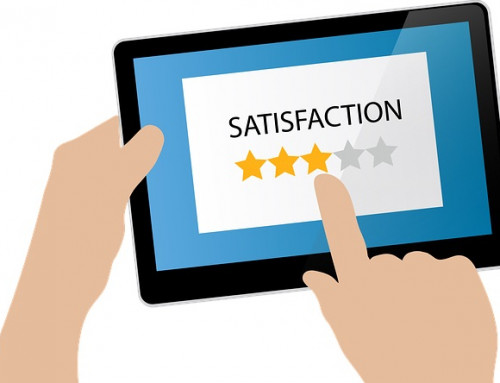
Without Concierge Customer Service, your business can lag behind. I had a conversation with an academic colleague not too long ago (he actually had been my undergraduate mentor). He said, “Jeanne, everywhere I go, customer service people are doing tasks. They’re going through the motions. They’re reading scripts. There’s no ownership.”
This is your chance to change that. This is your chance to take ownership and help your team do the same, to own your customers’ outcomes and their satisfaction.
If you do that, I promise you, they’ll notice.
They’ll stay.
They’ll buy more from you.
They’ll tell other people about you.
And customers like them will flock to you.
Once you have your Concierge Customer Service system in place, you can ensure that you know your customers so well that you don’t just serve them well, you delight them.
In the past, we’ve outlined some of the benefits of Concierge Customer Service, including Conversion, Penetration of your market, and Retention of your customers—particularly your most profitable customers. Concierge Customer Service (or CCS, for short) can also increase your lead flow, ensure continuous process improvement, provide customer service bellwethers, and yield benefits for your personnel. Bottom line, you enjoy an opportunity to retain your best, most profitable customers by providing Concierge Customer Service to them and, in so doing, capture more customers like them.
So, how do you get moving on this?
A first step towards developing a CCS system is to begin to develop a CCS mindset. Here are some “Action items” to get started with that:
1. Review recent data on customer satisfaction and engagement—and if you don’t have those data, consider why;
2. Review recent data on employee satisfaction and engagement—and if you don’t have those data, consider why;
3. Consider carefully if and how your customer service system embodies the 4 key principles of mindset, taking ownership of problems, making your company referable, and providing a superior customer experience.
Following on with that, another step is to develop surveys. Here are some of the action items for that:
1. Are you using surveys to gather general satisfaction data?
2. Are you using surveys to measure specific satisfaction with specific things? Like: satisfaction with customer service, the degree to which customer service representatives advocate for your customers, the extent to which customers perceive customer service representatives to be friendly and professional, and the customer’s ability to get to the right person immediately when a problem arises?
3. Are your surveys generating testimonials, with permission to use them?
4. Are you creating referrals through surveys?
5. Are you using surveys to generate online reviews?
6. Do you use best practices in your surveys, such as providing an incentive, making the surveys customer-centric, sending multiple invitations, and reporting back to customers and your team on the results?
Now you can really begin the process of implementing CCS.
Action items:
1. Evaluating your current customer service;
2. Using profit analytics to identify customers who would be eligible for Concierge Customer Service;
3. Designing your Concierge Customer Service system;
4. Reviewing the results of your internal and customer surveys with your team;
5. Introducing your CCS system to your team;
6. Identifying candidates for CCS representatives;
7. Defining clearly your CCS representative job description;
8. Identifying and screening CCS representative candidates;
9. Designating and training your CCS representatives;
10. Clarifying the structure of your CCS system and clearly identifying the benefits for your customers (and, in that process, identifying who in your company (a) is responsible for ensuring delivery of those benefits and (b) is involved in delivering them);
11. Ensuring that all CCS representatives understand and implement your CCS process when they work with customers;
12. Instituting a system for tracking all customer complaints, enabling you to (a) report back to the customer at least quarterly on problems you solved for him or her and (b) track customer issues, so that you can intervene to reduce problems and complaints;
13. Introducing your CCS program to eligible customers;
14. Planning for retention, turnover, and succession in the critical CCS representative position, ensuring that evaluation and feedback systems are in place; and
15. Possibly instituting an internal customer service team.
16. Building a survey system that allows you to (a) repeat the survey questions you asked of customers, so you elicit feedback from them every 9-12 months and (b) ask these questions of new customers within 3 months of the inception of your relationship, then 9-12 months thereafter;
17. Building a similar system to survey your employees every 9-12 months
Adapting to Generational Differences is another aspect that must be considered when implementing CCS. We’ve discussed a little bit in the past how generational differences can create different expectations in your customer base. Important action items on this topic include:
1. Even if many of the decision-makers in the companies your serve come from the Baby Boom cohort, recognize that you must still use social media to attract and serve them.
2. Recognize, too, that great diversity in technological adoption exists in the Baby Boom cohort. That means you must know how individuals prefer to communicate and order.
3. Understand that, because many Baby Boomers plan to delay retirement, you will likely continue to serve Baby Boomers for many years to come. Because of the difference between this cohort and both Generational X and Millennials, recognizing and responding to generational differences will remain important.
4. Because of the extent to which Generation X and especially Millennials use mobile phones, you must design websites and marketing campaigns to be responsive. Your mantra must be “mobile-first.”
5. Recognize the high levels of social media use among Generation X and Millennials; customers who belong to these cohorts can and do affect others’ opinions and actions. They can either promote a business, by serving as a brand advocate and “referral generator,” or harm a business by posting harmful content about its products and services. This underscores the importance of keeping your finger on the pulse of customer sentiment, to ensure that the messages they disseminate remain positive.
6. Members of Generation X and especially members of the Millennial cohort prove to be less trusting and more cynical about social institutions than their predecessors are. That makes it imperative to ensure that you provide social proof to support their decisions.
7. Because Millennials now comprise the largest generational segment of the US workforce (according to the US Bureau of the Census), you must understand the Millennials. You must know how to manage them, as employees, and how to attract and serve them, as customers.
8. Leveraging the testimonials and statistical data will prove increasingly important in attracting and serving Millennial customers.
9. As the proportion of Millennial decision-makers in companies increases, expect that the demand for such things as the ability to text orders to your company will increase. This is one reason that “tagging” information to segment customers in your CRM becomes critical, so that your salespeople and customer service representatives can know customers’ preferences easily.
 Want to learn more?
Want to learn more?
This blog post is based off material from my book with Randy MacLean:
“YOU CAN’T SERVE THEM WELL IF YOU DON’T KNOW THEM WELL: Capturing and Captivating Customers with Concierge Customer Service™”
You can get the first two chapters for FREE here.
If you’d like a full copy of the entire book, you can get it here.
 Dr. Jeanne Hurlbert, President of Hurlbert Consulting is an expert in sociology and survey research. After spending more than 25 years in academia, she now uses her extensive behavioral science expertise to help companies like yours distinguish yourselves through customer service. What sets her approach to customer service apart is that she begins by helping companies meld research and marketing to find out:
Dr. Jeanne Hurlbert, President of Hurlbert Consulting is an expert in sociology and survey research. After spending more than 25 years in academia, she now uses her extensive behavioral science expertise to help companies like yours distinguish yourselves through customer service. What sets her approach to customer service apart is that she begins by helping companies meld research and marketing to find out:
(a) exactly what their customers want and
(b) exactly how well they’re succeeding in giving customers what they want.
You can schedule a consult with her by going to www.ConciergeCustomerService.com; you can call her at 888-590-9677; or send an email here. And, if you’d like to complete her complimentary assessment to see how well you’re doing in knowing and serving your customers well, just go to www.FixYourService.com.





